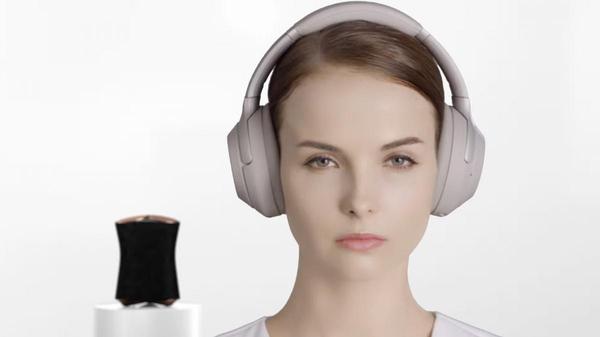The immersive audio revolution is here!
Immersive audio is like 3D but for the sound. And no need for special glasses! Imagine: the voices, the guitar, the bass, the piano, even the emotions of the public in the case of concerts, placed on a sphere that represents the space at 360°.
At the time of remixing in the studio, the sound engineer will define the distance and the angle, for each source. The sound space explodes... Every track – even a standard you've listened to 1,000 times in stereo – becomes a surprise. As in the case of Bowie, as in the case of the Beatles (and in particular Lucy in the Sky with Diamonds).
And we finally have the feeling of listening to what the artist really wanted to achieve. In front, behind, on the sides, above, below, the sound gives the impression of coming from everywhere. Even The Ride of the Valkyries by Richard Wagner, which still dates from 1856, is getting a serious facelift!
New titles remixed every day
This revolution wouldn't be of interest if it wasn't within everyone's reach. Indeed, no need to plan a budget to change all your equipment. A priori, you already have everything: a smartphone, headphones or headphones, and a subscription to a streaming platform.
Immersive audio, to date, is mainly based on two technologies and two brands, with two distinct strategies: first of all that of Apple (with Dolby) called “Audio Spatial“ (with Dolby Atmos). When using an AirPods Max headset or the latest generation Apple earphones (AirPods 3, AirPods Pro) which are the only ones to integrate an accelerometer and gyroscopes, Audio Spatial can be associated with a specific technology for dynamic tracking of the movements of the head which further increases the feeling of positioning audio sources in space. With headphones or earphones from another brand, go to the settings of the "Music" application and set "Dolby Atmos" to "Always on": this is the condition for not remaining in stereo listening although the song indicates "Dolby Atmos" encoding. Quality with third-party headphones or earphones is not guaranteed, however: if it seems inferior to the stereo mix, you always have the option of going back to stereo.

And then there is the technology of Sony, the precursor, with its “360 Reality Audio“. It also works with any headset or earphone, of any brand, even if the Japanese recommend - it's fair game - to use their own peripherals.
Don't look for CDs encoded in immersive audio: tracks in 360 Reality Audio or Audio Spatial are only available via streaming platforms. And the surprise is that in this new 360° sound market, the leader Spotify is completely absent.
The Swedish, world number 1 with 31% of paying subscribers worldwide (June 2021) according to MIDiA, simply does not have a spatialized sound offer in its “Premium” package. And there is no indication that the future “HiFi” package, promised 1 year ago, will include it.
Apple adds dynamic head tracking
Opposite, Apple Music, the world's second music streaming platform with 15% market share, goes all out by offering Spatial Audio, at no extra cost price: the individual subscription is 9.99 euros per month since the launch of Apple Music (4.99 euros for students).
If you are a subscriber to the French Deezer, the Premium offer at 10.99 euros per month gives access to songs encoded in 360 Reality Audio from Sony. There remain two platforms compatible with both the immersive sound of Japanese and with Dolby Atmos: Amazon Music with the Unlimited offer at 9.99 euros and Tidal – with the HiFi Plus offer at 19.99 euros per month.



![PAU - [ Altern@tives-P@loises ] PAU - [ Altern@tives-P@loises ]](http://website-google-hk.oss-cn-hongkong.aliyuncs.com/drawing/179/2022-3-2/21584.jpeg)

![Good deal: 15% bonus credit on App Store cards of €25 and more [completed] 🆕 | iGeneration Good deal: 15% bonus credit on App Store cards of €25 and more [completed] 🆕 | iGeneration](http://website-google-hk.oss-cn-hongkong.aliyuncs.com/drawing/179/2022-3-2/21870.jpeg)





Related Articles